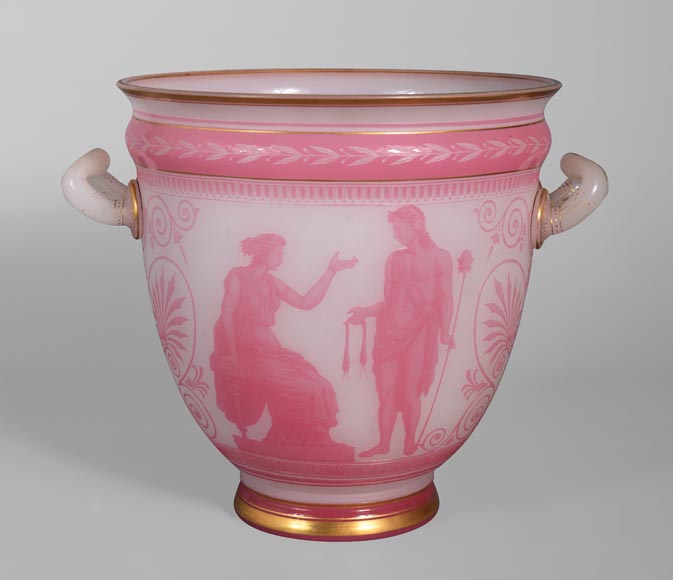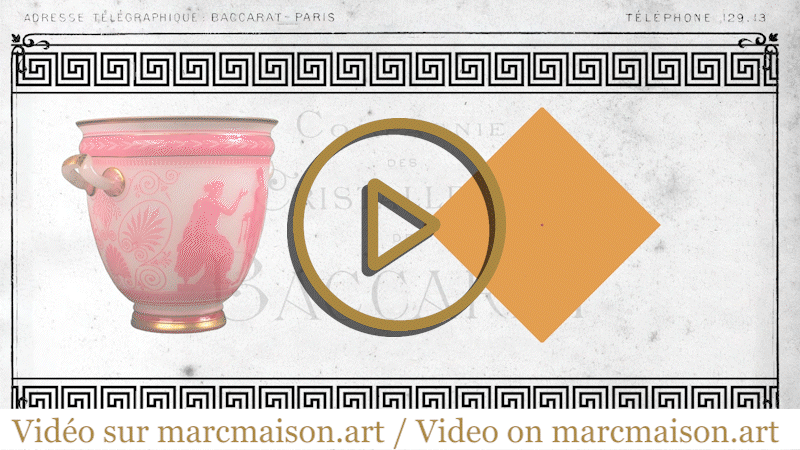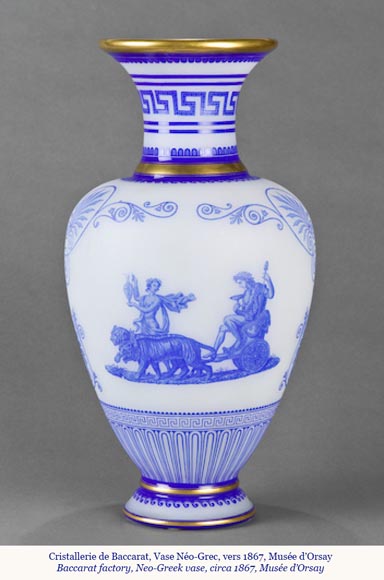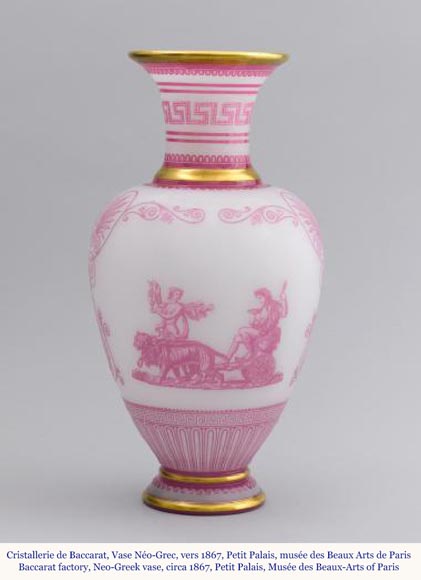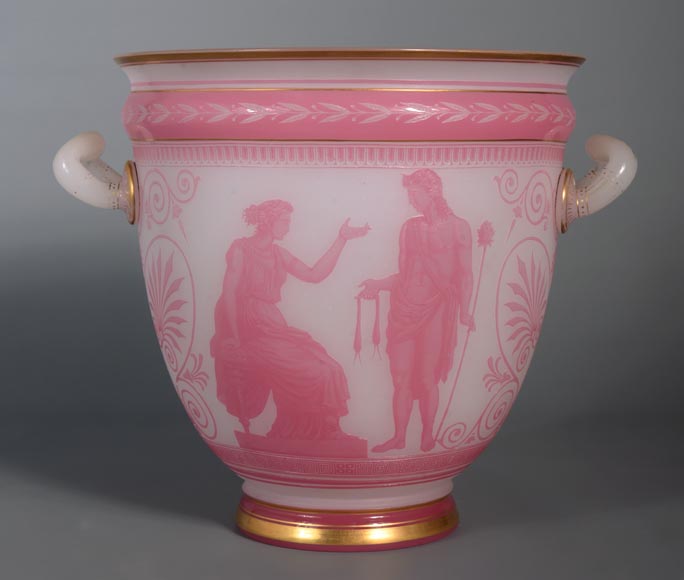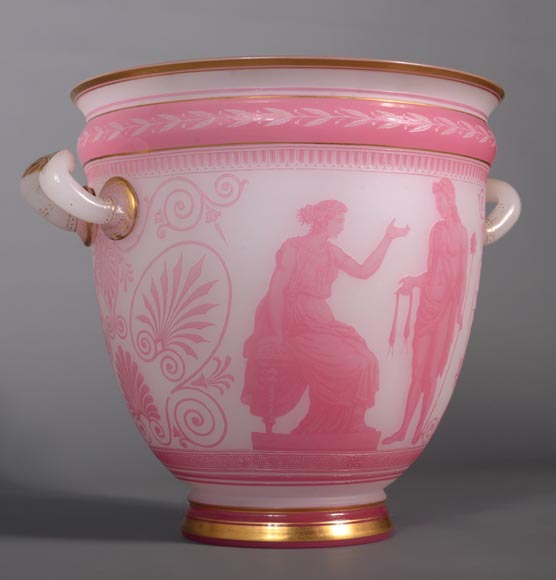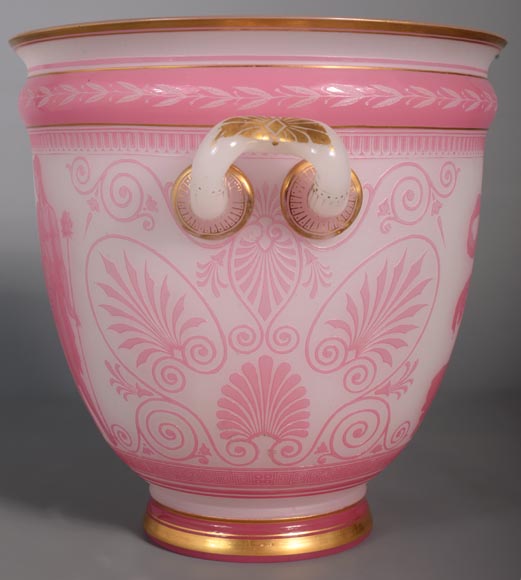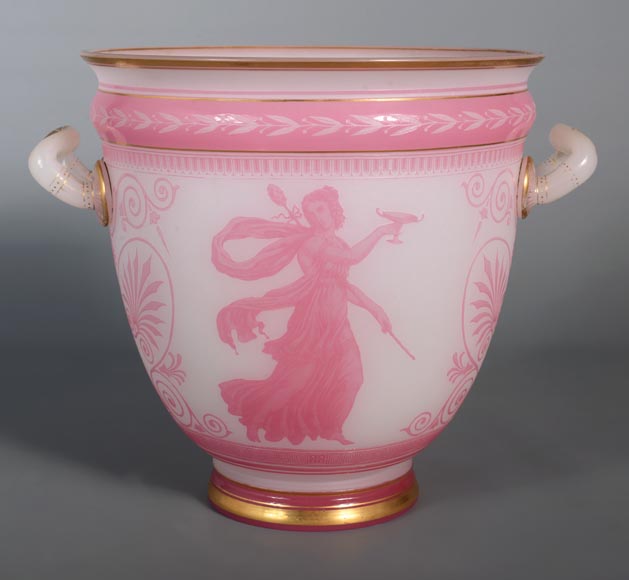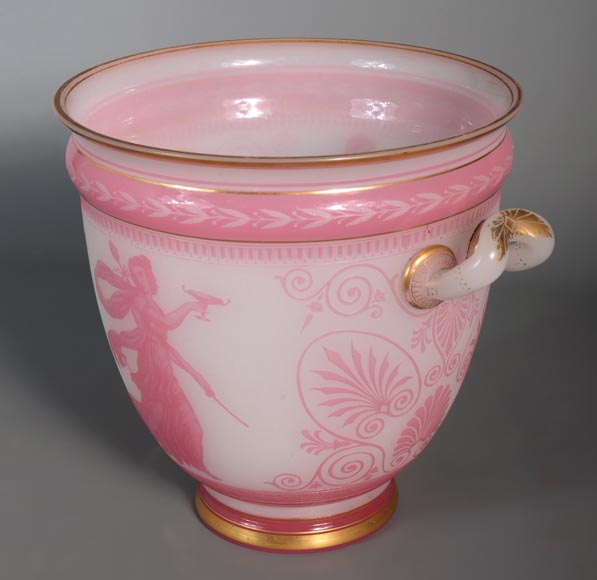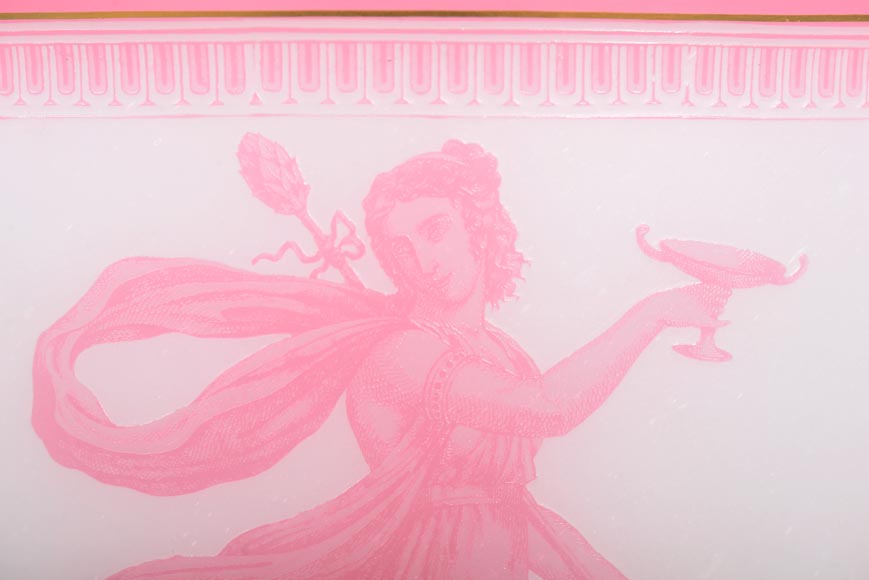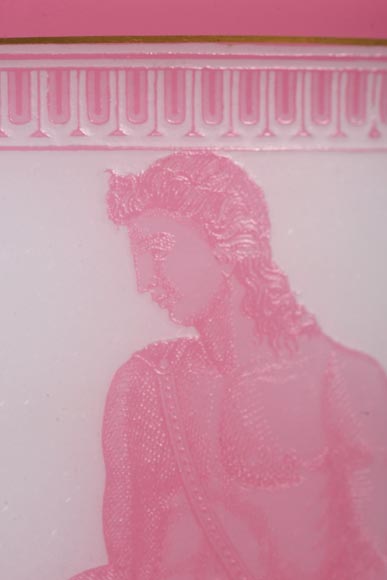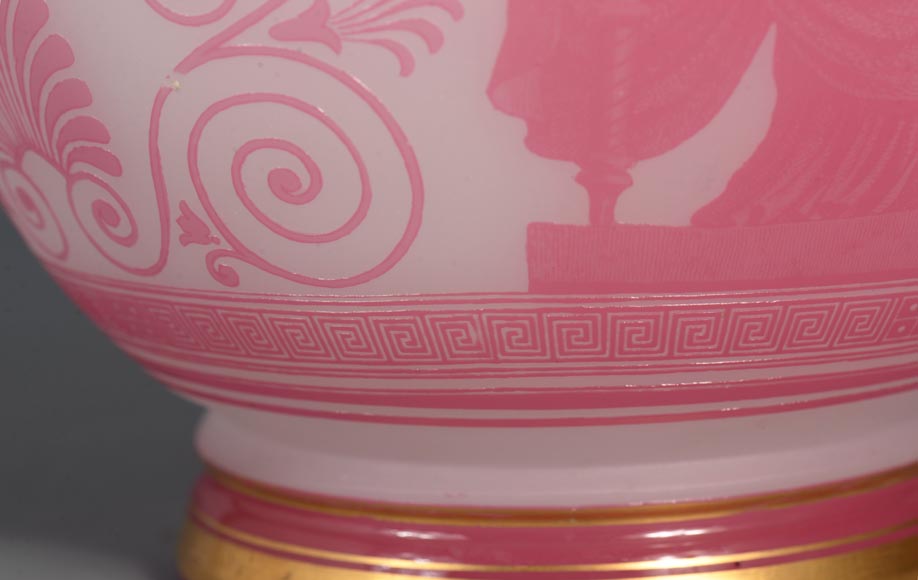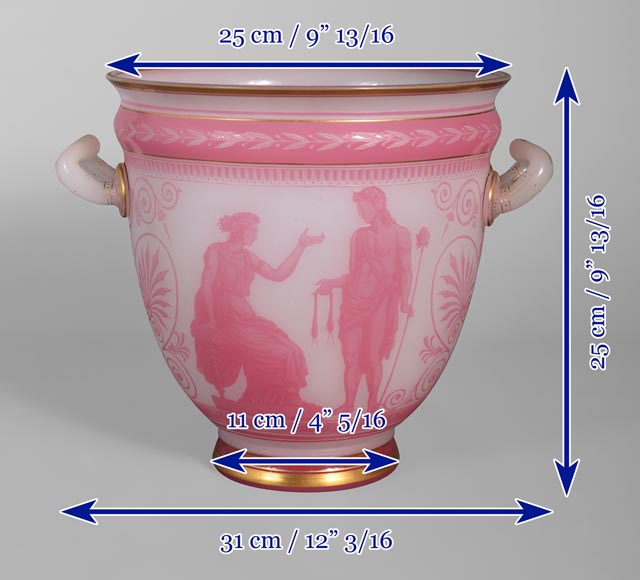Style Napoleon III / Ref.13171
CRISTALLERIE DE BACCARAT, Neo-Greek, krater-shaped vase, made out of coated crystal, and etched through hydrofluoric acid, 1867 World’s Fair
Dimensions
Width 12'' ¼ 31cm
Height 9'' ⅞ 25cm
Depth: 9'' ⅞ 25cm
Origin:
19th century.
Status:
Good condition.
This krater-shaped vase made out of coated crystal is a work from the Baccarat crystal-glass making factory, between 1862 and 1867, year when similar models were displayed at the Parisian World’s Fair.
It is the Baccarat manufacture’s second entry, the first being at the first Parisian World’s Fair of 1855. Baccarat does win a gold medal, in particular for two vases made out of ruby red crystal, and a crystal fountain of seven meters high.
Created under Louis XV’s reign, the crystal-glass making factory got its international fame through its participations, all along the 19th century, and until 1937, to the World’s Fairs.he works of the manufacture are scarcely signed between 1764 and 1860, year where the first labels did appear punctually. Fifteen years later, a seal with the name of the firm is placed on some blowing models and gilded bronze pieces. It is not until 1936 that the « BACCARAT » brand, with a carafe and two glasses, started appearing systematically on every production.
During the 1867 World’s Fair, Baccarat inspired itself from the Bacchus cult for most of its production. We can see in our vase the influence of ancient ceramics through the shape of a krater – a piece of ceramics used by Greeks to dilute wine with water – as well as in the composition and the decoration’s subject.
The latest is engraved thanks to hydrofluoric acid, a technical mastered by the German chemist Louis Kessler in 1855, who did improve the chemical formula of the bath to make it less aggressive and thus, less dangerous. Baccarat bought the patent in 1864, allowing the manufacture to diverse its production and to reach a new level of virtuosity.
Detaching themselves from an opaque, white background, pink colored figures are represented in the spirit of ancient decorations on ceramics. We can see on one face a maenad wearing a spinning drapery, holding a drinking cup in one hand and a thyrsus in the other – a stick similar to a scepter and crowned with a pine cone, Dionysus’s attribute. On the other side, two figures are placed face to face, a masculine and a feminine one. They might represent the divine couple of Dionysus and Ariadne : she is sat on an ancient seat, richly dressed, and addressing the half-naked young man that is also carrying a thyrsus. In order for this decoration to be perfect, the two figurative scenes are framed with different patterns : palm motif, interlacing, Greek key frieze and laurel leaves.The handles have been realized after : they were shaped in clear crystal, and then adorned with gold painting applied with a brush.
Even if, until today, our vase is the only one known showing this krater shape and the color rose, other similar models, with similar decorations, does exist – in particular in blue and yellow. Moreover, this bacchanal scene on an opaque white background have been applied on other pieces produced by the firm, that can be seen in museums’ collections, such as the Corning Museum of Glass, the Chrysler Museum of Norfolk, the Musée d’Orsay or at the Petit Palais.
For more information on this work, see the video on MarcMaison.art.
Price: on request
Recommended for you :
Dimensions:
Width: 14
Height: 28
Depth: 10
Dimensions:
Height: 15
Diameter: 13
Dimensions:
Height: 11
Diameter: 37
Dimensions:
Width: 27
Height: 17
Depth: 23
Dimensions:
Width: 11
Height: 15
Depth: 11
Dimensions:
Height: 29
Diameter: 10
Dimensions:
Width: 16
Height: 24
Depth: 11
Dimensions:
Height: 23
Diameter: 10
Dimensions:
Height: 35
Diameter: 30
Dimensions:
Height: 10
Diameter: 9
Dimensions:
Height: 33
Depth: 16
Dimensions:
Width: 20
Height: 34
Depth: 15



